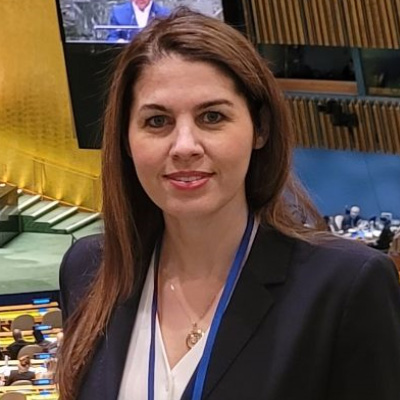Back
Oral
Emerging & Innovative Technologies (Interdisciplinary)
Building Community Resilience Through Integrating of Research, Innovation, and Vulnerability Assessment to Strengthen Communities Against Natural Hazards
Monday, May 19, 2025
3:15 PM – 3:30 PM Alaska Daylight Time (AKDT)
Room: Room 6

Rouzbeh Nazari, PhD
Chair and Professor
University of Memphis, Tennessee, United States
Maryam Karimi
Director of Research/ Associate Professor
University of Memphis, United States
Author(s)
Abstract Submission: The increasing destruction caused by natural disasters has made it evident that community resilience must be systematically re-evaluated and reformed. This project focuses on understanding the interconnectedness between a community's population, its built environment (critical infrastructures), and the hazards or disasters it faces. The primary objective is to establish a research-to-innovation pipeline that fosters collaboration and accelerates the impact of research through deeper cooperation and information sharing across sectors, regions, and with significant community involvement. A comprehensive decision-making framework is essential for analyzing damage and vulnerability, and achieving resilience. The project integrates high-resolution flood modeling and storm simulation with complex numerical simulations of the built environment, developing vulnerability indices that allow for a holistic approach to disaster preparedness, adaptation, and recovery. This initiative seeks to provide new concepts, methods, and tools that communities can use to assess their vulnerabilities and enhance their resilience, minimizing risk and managing the impact of natural disasters and extreme storm events. A key focus of the project is addressing the need for accessible and comprehensible resources that assist citizens, communities, and municipalities in making informed decisions. Special emphasis will be placed on involving underrepresented populations in Birmingham, including communities of color, older adults, children, and low-income groups, ensuring that their voices are central to disaster planning and response efforts. This project provides a detailed understanding of how communities and the built environment interact during natural disasters, particularly flooding. It offers an innovative toolkit and framework for stakeholders, such as emergency managers, urban planners, and community members, to assess interactions at multiple scales, yielding insights into multi-hazard resilience design and adaptive policy mechanisms. This comprehensive approach is critical given the increasing vulnerability of flood-prone areas and populations.
Learning Objectives/Expected Outcome (Optional) :
Learning Objectives/Expected Outcome (Optional) :

